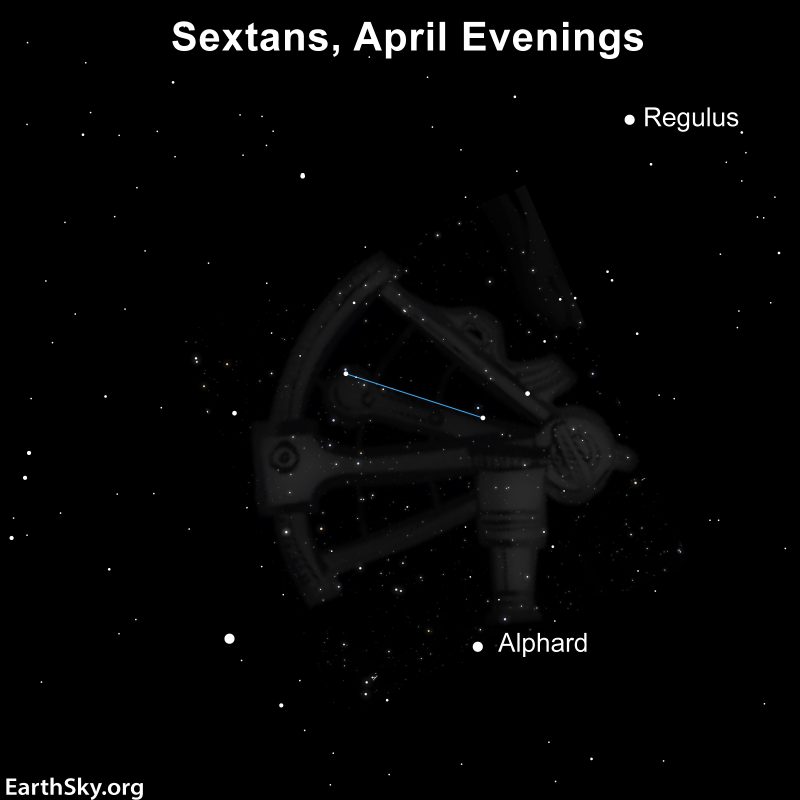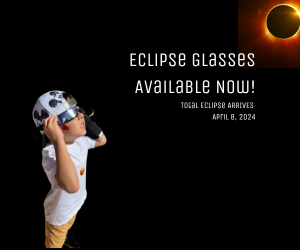
The constellation of Sextans the Sextant represents an astronomer’s device once used to measure the positions of the stars. Johannes Hevelius named this constellation in the 1600s. Hevelius created new constellations when he carved out dark patches of sky from between more prominent constellations. He made Sextans out of the somewhat empty space between Leo the Lion and Hydra the Water Snake.
Location and stars
Sextans the Sextant is notable for what it lacks. From the Northern Hemisphere in April, Sextans is the deep and dark empty patch of sky beneath Leo the Lion. You’ll want to head to a dark-sky site to check out this area of sky during Northern Hemisphere’s spring. The constellation’s border begins just six degrees below the bright star Regulus in Leo.
The brightest star in all of Sextans, although not very bright, is a dim 4.48-magnitude light known as Alpha Sextantis. It lies about 287 light-years from Earth. Gamma Sextantis and Beta Sextantis are two 5th-magnitude stars that complete the simple V-shape of Sextans the Sextant.
Deep-sky observing targets in Sextans
Clusters and nebulae are scarce in Sextans, although here are many galaxies that reside here. However, only one of these galaxies is brighter than 10th magnitude. That galaxy is NGC 3115. NGC 3115, aka the Spindle Galaxy, lies in the western portion of the constellation, not far from Hydra. The Spindle Galaxy is magnitude 9.19 and lies about 32 million light-years away. This lenticular galaxy is a few times larger than the Milky Way. Lenticular galaxies are galaxies that have characteristics of both a spiral galaxy and an elliptical galaxy. Often we see these galaxies edge-on, making it hard to determine if they are truly ellipticals or spirals.
William Herschel discovered the Spindle Galaxy on February 22, 1787. In 1992, researchers at the University of Hawaii and University of Michigan announced they found a supermassive black hole at the center of this galaxy. At about 2 billion times the mass of the sun, it is one of the largest black holes known. The black hole was easy to find due to its large size compared to the rest of the galaxy. The ages of the stars show the Spindle Galaxy to be an older galaxy, and its black hole is no longer growing and consuming neighboring stars. NGC 3115 should not be confused with NGC 5866, which is also known as the Spindle Galaxy but lies in the constellation Draco the Dragon.

Other notable galaxies in Sextans
Read about other unique galaxies in Sextans, including the largest-yet galaxy proto-supercluster and a bright galaxy in the early universe with first generation stars.
Bottom line: Sextans the Sextant is a dim patch of sky that lies between Leo and Hydra and is home to some interesting galaxies.











